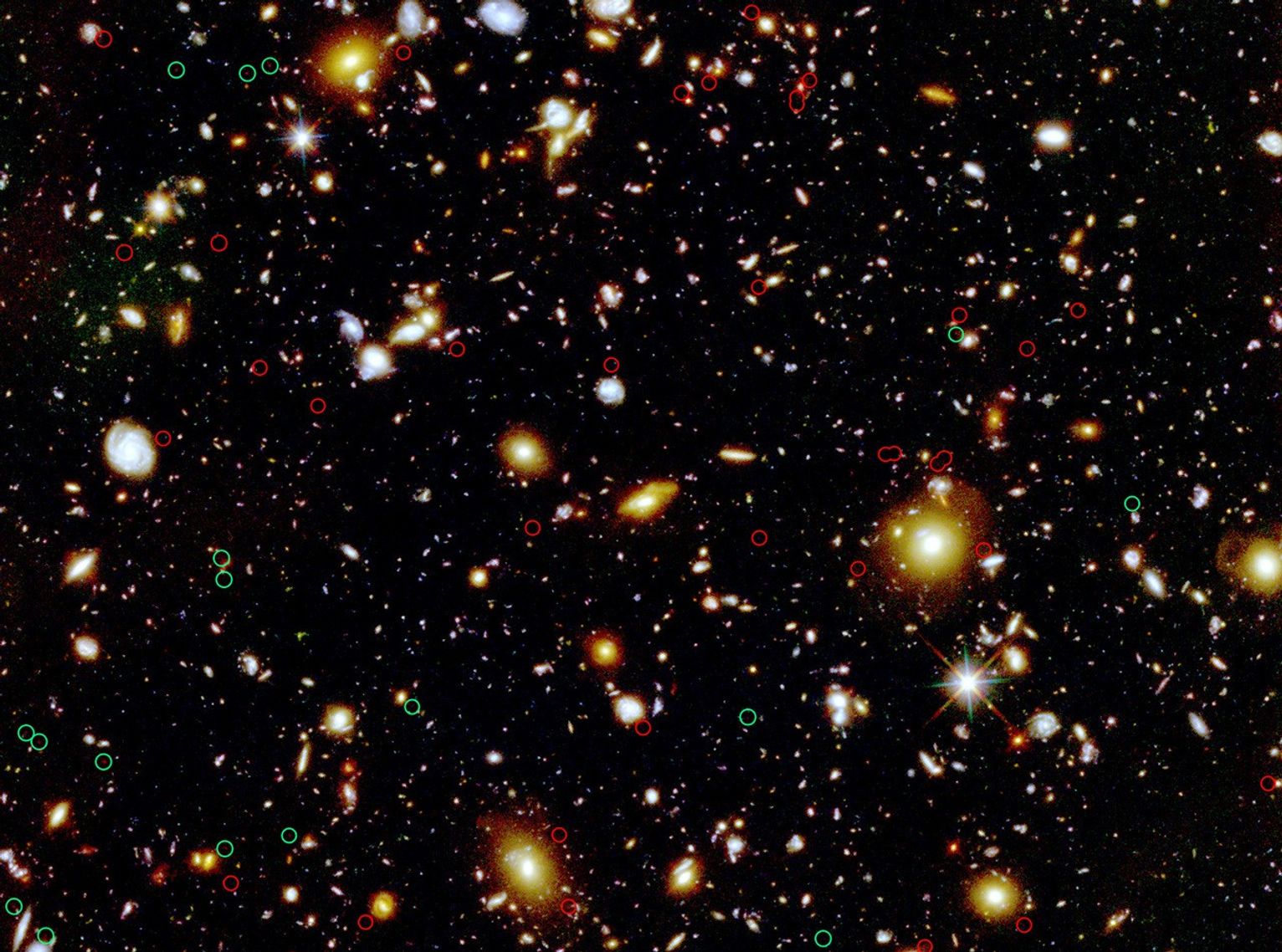1 min read
Gravitationally Lensed High-Redshift Galaxy Candidates

This is a color composite image of the Hubble Ultra Deep Field. Green circles mark the locations of candidate galaxies at a redshift of z~8, while higher-redshift candidates are circled in red. The estimated distances to these candidates have not been confirmed spectroscopically.
About 20 to 30 percent of these high-z galaxy candidates are very close to foreground galaxies, which is consistent with the prediction that a significant fraction of galaxies at very high redshifts are gravitationally lensed by individual foreground galaxies. This will help as a guide for future observations planned for the James Webb Space Telescope when it is launched.
About the Object
- R.A. PositionR.A. PositionRight ascension – analogous to longitude – is one component of an object's position.03h 32m 38.99s
- Dec. PositionDec. PositionDeclination – analogous to latitude – is one component of an object's position.-27° 47' 29.04"
- Object NameObject NameA name or catalog number that astronomers use to identify an astronomical object.HUDF
- Release DateJanuary 12, 2011
- Science ReleaseIn Deep Galaxy Surveys, Astronomers Get a Boost – from Gravity
- CreditCredit: NASA, ESA, S. Wyithe (University of Melbourne), H. Yan (Ohio State University), R. Windhorst (Arizona State University), and S. Mao (Jodrell Bank Center for Astrophysics, and National Astronomical Observatories of China) Acknowledgment: G. Illingworth and R. Bouwens (University of California, Santa Cruz), and the HUDF09 Team
Related Images & Videos

Gravitational Lensing of Distant Galaxies
This diagram illustrates how gravitational lensing by foreground galaxies will influence the appearance of far more distant background galaxies. This means that as many as 20 percent of the most distant galaxies currently detected will appear brighter because their light is...
Share
Details
Last Updated
Aug 17, 2025
Contact
Media
Claire Andreoli
NASA’s Goddard Space Flight Center
Greenbelt, Maryland
claire.andreoli@nasa.gov




























